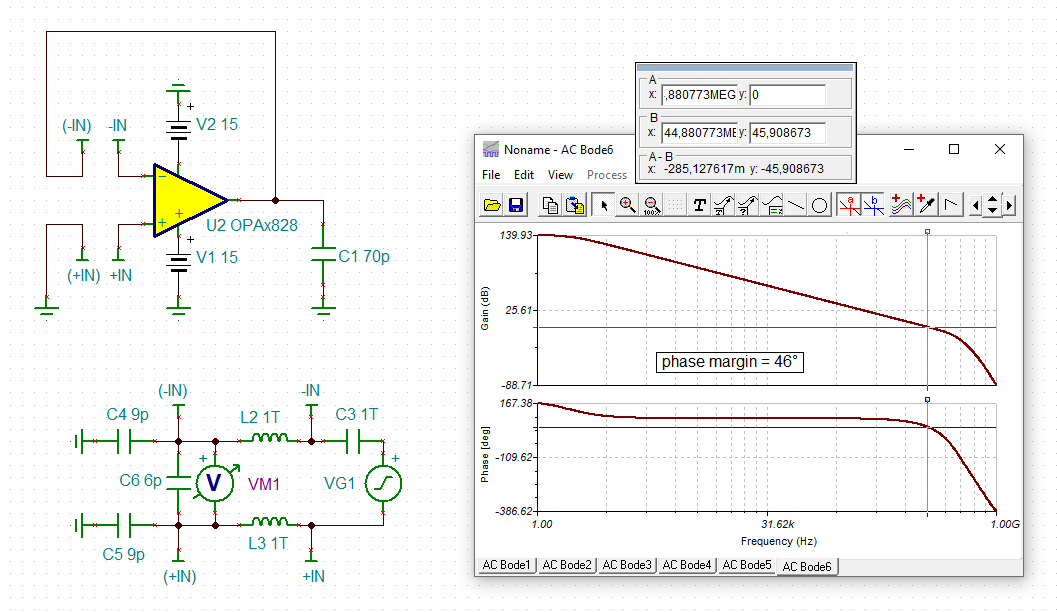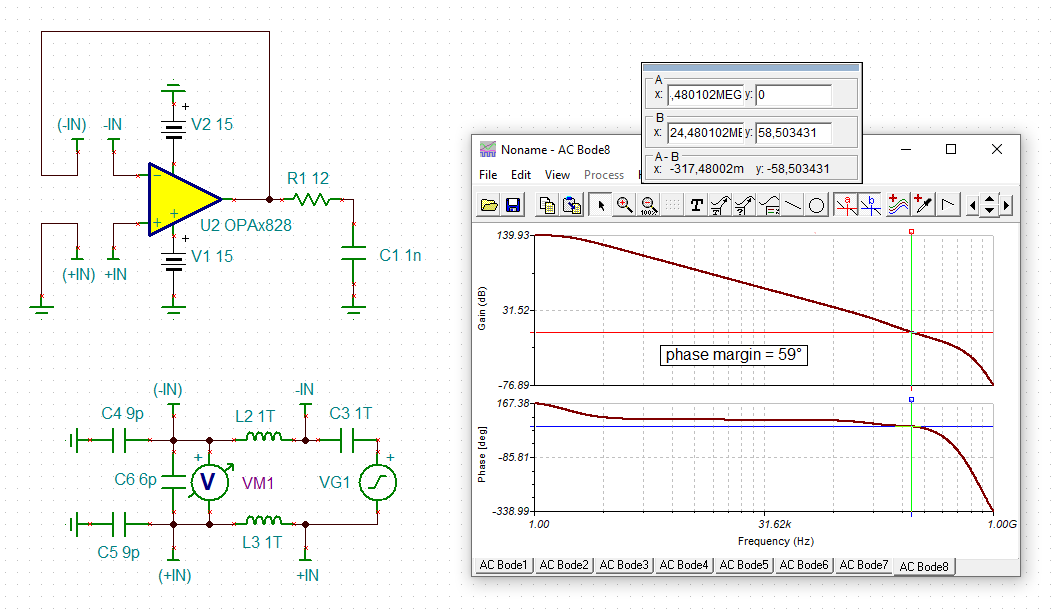Hi team,
I couldn't find the phrase of "unity-gain stable" in the datasheet.
This means we need to add some caps for unity gain purpose?
From Fig22, it looks to have enough phase margin, though.

Let me clarify if we need extra caps or not.
thanks!
This thread has been locked.
If you have a related question, please click the "Ask a related question" button in the top right corner. The newly created question will be automatically linked to this question.
Hi team,
I couldn't find the phrase of "unity-gain stable" in the datasheet.
This means we need to add some caps for unity gain purpose?
From Fig22, it looks to have enough phase margin, though.

Let me clarify if we need extra caps or not.
thanks!
Watana-san,
The OPA828 is unity-gain stable. The Figure 22 Open-loop gain/phase plot vs. frequency indicates about 60 degrees of phase margin remaining as Aol passes through 0 dB. Kai's point about the reference to "G=+1" is another indicator that the op amp is unity-gain stable. Michael's point about the 30 pF load is noted. One might question why a capacitance is specified for the unity-gain cross frequency? My conclusion is indeed it allows for the presence of a parasitic capacitive load and assures the OPA828 remains stable with it present when operated in unity gain.
Regards, Thomas
Precision Amplifiers Applications Engineering
Hi all,
I see, I understand OPA828 is unity-gain stable at least CL<=20pF condition.
Thank you very much!
Hi Takashi,
the OPA828 can even accept some higher capacitive loads:

It's often said that the phase margin shall be at least 45° for stable performance. So the OPA828 would be able to directly drive a 70pF load as voltage follower (gain = 1V/V). I personally prefer a minimum phase margin of arround 60°.
Figure 49 of datasheet shows how the OPA828 behaves at still higher capacitive loads.
According to section 7.3.7 a small isolation resistor at the output of OPA828 can dramatically improve the phase margin and by this the stability of voltage follower circuit when driving much higher capacitive loads:

Kai
Thanks Kai for providing Watana-san the additional OPA828 C-load information.
Regards, Thomas
Precision Amplifiers Applications Engineering